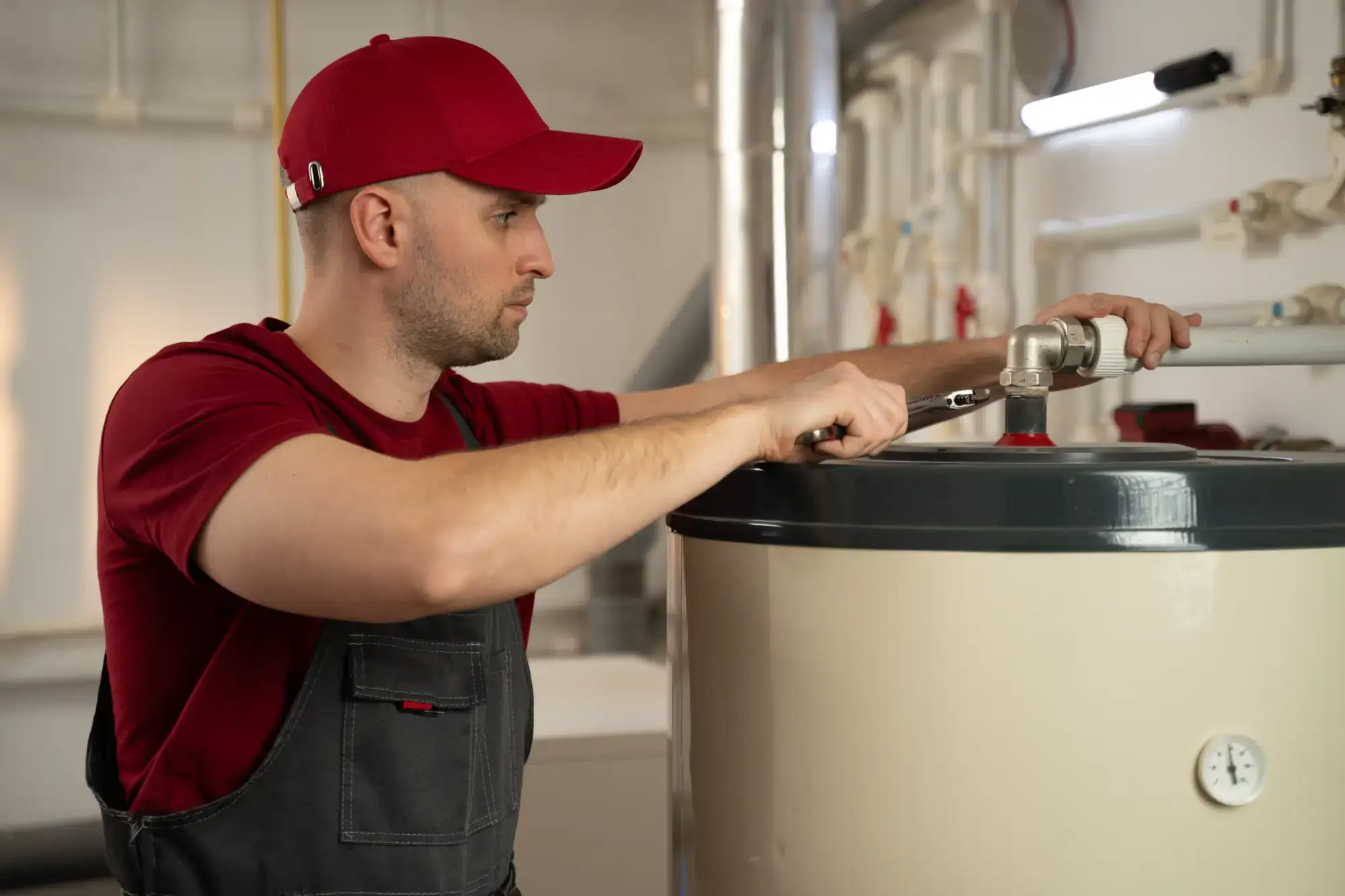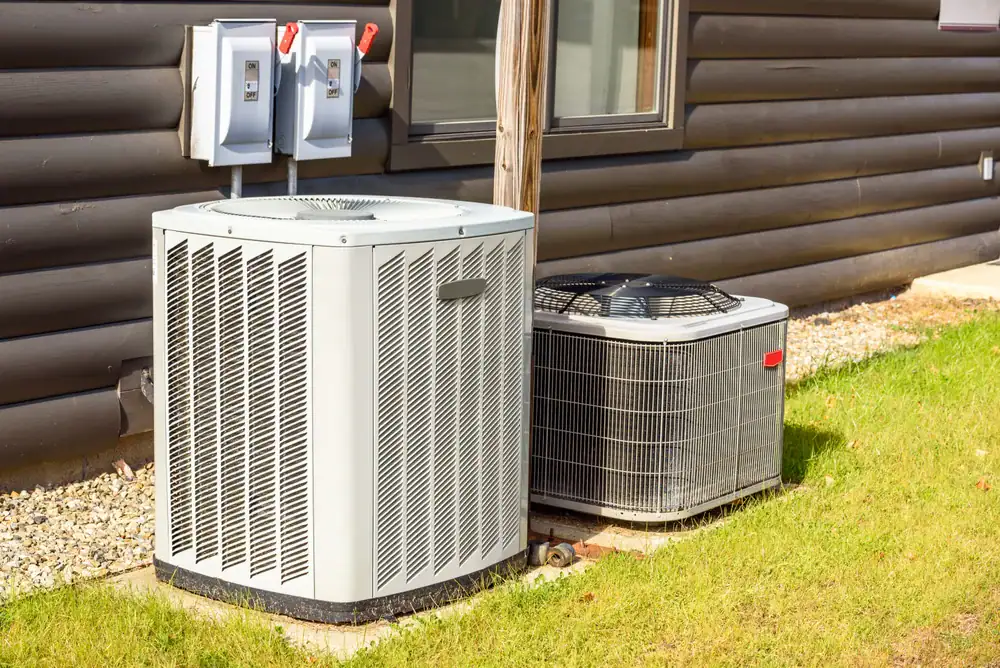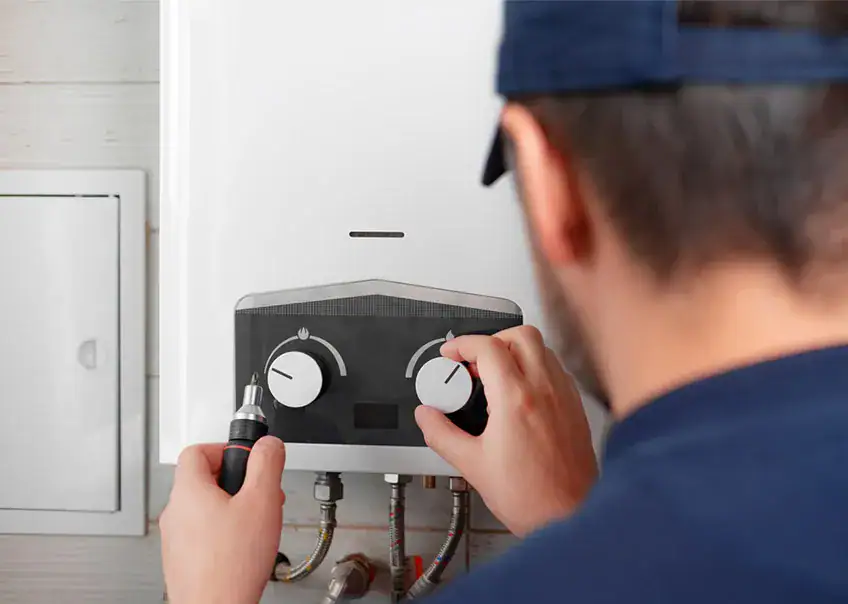Summary:
The Most Common Early Warning Signs of Water Heater Problems
Water heaters don’t just stop working overnight. They give you plenty of advance notice through changes in performance, sounds, and visual cues. The key is knowing what to look for and understanding which signs require immediate attention versus those that indicate gradual decline.
Most San Francisco homeowners use their water heaters daily without giving them much thought. But paying attention to subtle changes in your system’s behavior can prevent major headaches down the road.
Strange Noises Coming From Your Water Heater Tank
If your water heater starts making popping, banging, or rumbling sounds, sediment buildup is likely the culprit. Over time, minerals from San Francisco’s water supply settle at the bottom of your tank, creating a barrier between the heating element and the water. As water heats up beneath this sediment layer, it creates steam bubbles that pop and crackle as they rise through the mineral deposits.
These noises indicate your system is working harder than it should to heat water. The sediment acts like insulation, forcing your water heater to use more energy while delivering less hot water. If you catch this early, a professional flush can remove the buildup and restore efficiency. However, if the noises persist after flushing, the sediment may have caused permanent damage to internal components.
What makes this particularly concerning for San Francisco homeowners is our area’s hard water conditions. The mineral content in local water accelerates sediment accumulation, making regular maintenance even more critical. Systems that develop significant sediment buildup often show other warning signs like reduced hot water capacity and longer heating times.
Inconsistent Water Temperature and Reduced Hot Water Supply
If your water heater starts making popping, banging, or rumbling sounds, sediment buildup is likely the culprit. Over time, minerals from San Francisco’s water supply settle at the bottom of your tank, creating a barrier between the heating element and the water. As water heats up beneath this sediment layer, it creates steam bubbles that pop and crackle as they rise through the mineral deposits.
These noises indicate your system is working harder than it should to heat water. The sediment acts like insulation, forcing your water heater to use more energy while delivering less hot water. If you catch this early, a professional flush can remove the buildup and restore efficiency. However, if the noises persist after flushing, the sediment may have caused permanent damage to internal components.
What makes this particularly concerning for San Francisco homeowners is our area’s hard water conditions. The mineral content in local water accelerates sediment accumulation, making regular maintenance even more critical. Systems that develop significant sediment buildup often show other warning signs like reduced hot water capacity and longer heating times.
Want live answers?
Connect with a Sugar Bear Home Services expert for fast, friendly support.
Visual Warning Signs That Demand Immediate Attention
While performance issues develop gradually, visual warning signs often indicate more serious problems requiring immediate action. These signs suggest your water heater’s structural integrity may be compromised, potentially leading to catastrophic failure if ignored.
The most critical visual indicators involve water, rust, and corrosion around your system. Unlike performance issues that give you time to plan, these signs often require emergency intervention to prevent property damage.
Water Pooling Around Your Water Heater
Any water around your water heater base should trigger immediate concern. Small leaks often start as minor drips from connections or the temperature and pressure relief valve, but tank leaks indicate serious structural problems. The challenge is determining the source quickly and accurately.
Check connections first—loose fittings at the top of the tank or along supply lines can often be tightened or replaced without major expense. However, if water is coming from the tank itself, replacement becomes necessary. Tank leaks typically start small but expand rapidly as metal fatigue worsens.
San Francisco homeowners face particular risk because many homes have water heaters in interior locations where leaks can cause extensive damage to flooring, walls, and personal belongings. A failing water heater can release hundreds of gallons per hour, turning a minor leak into a major flood in just a few hours. If you discover any pooling water, shut off the water supply immediately and call for professional evaluation.
Rusty Water and Corrosion Signs
When hot water from your taps appears rusty, discolored, or has a metallic taste, your water heater’s internal components are deteriorating. This typically indicates the anode rod—designed to prevent tank corrosion—has failed and needs replacement. Without a functioning anode rod, the tank itself begins rusting from the inside out.
Rust-colored water usually appears gradually, starting as a slight tint that darkens over time. Some homeowners notice the discoloration only in morning water or after periods of non-use, when rusty water has had time to settle in the tank. However, any consistent discoloration in hot water indicates internal corrosion that will worsen without intervention.
External rust around connections, on the tank surface, or near the base also signals trouble. While surface rust might seem cosmetic, it often indicates moisture problems that can lead to more serious structural issues. In San Francisco’s marine climate, external corrosion can accelerate quickly, making early detection and treatment crucial for extending system life.
When to Call Sugar Bear Home Services for Professional Water Heater Help
Recognizing warning signs is only valuable if you take appropriate action. Some issues can wait for scheduled maintenance, while others require immediate professional attention. Understanding the difference helps you prioritize your response and potentially save thousands in damage costs.
If you notice any combination of these warning signs, or if your water heater is approaching 8-10 years old, professional evaluation becomes essential. At Sugar Bear Home Services, we bring third-generation expertise to every water heater diagnosis, helping San Francisco homeowners make informed decisions about repair versus replacement. Our technicians take time to thoroughly assess your system, explain all options, and provide transparent pricing so you can choose the best solution for your situation.



